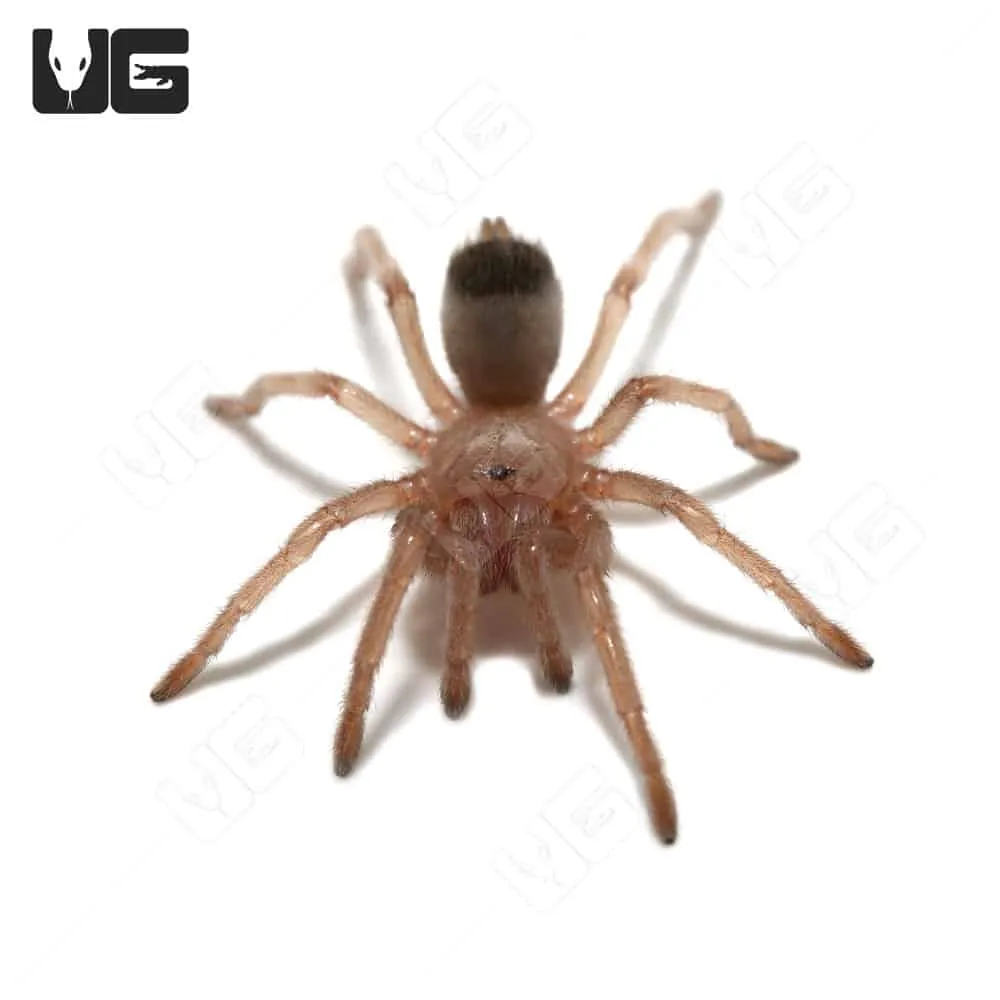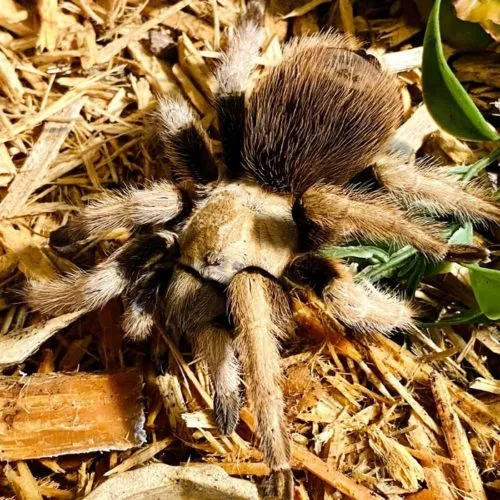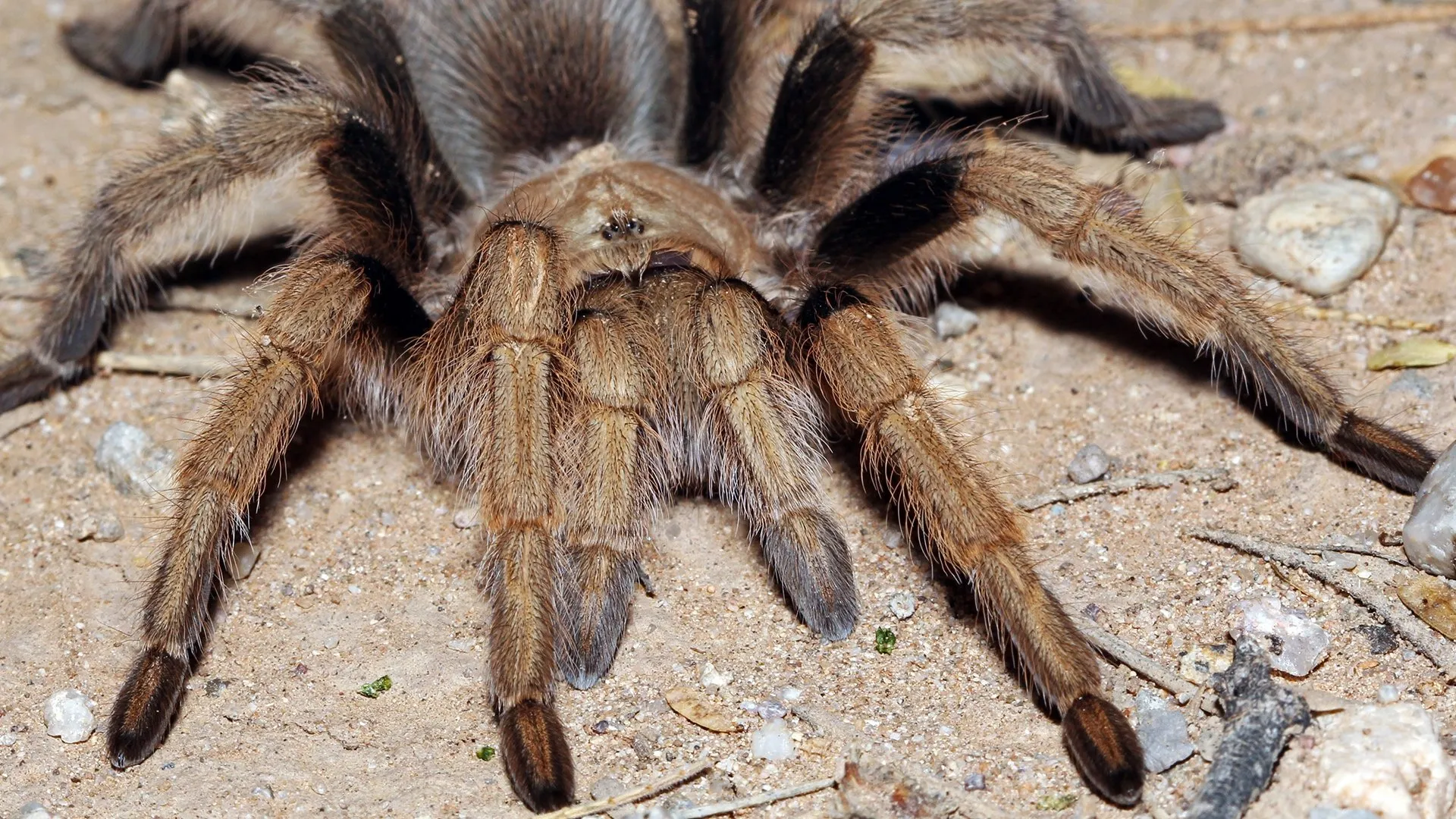Caring for an Arizona Blonde Tarantula (Aphonopelma chalcodes) involves understanding its dietary needs. Feeding frequency is a crucial aspect of their care, impacting their health, growth, and overall well-being. This guide provides insights into how often to feed your Arizona Blonde Tarantula, considering various factors and offering practical advice to ensure your pet thrives. Understanding the optimal feeding schedule ensures your tarantula receives adequate nutrition without the risks associated with overfeeding or underfeeding, contributing to a longer and healthier life for your eight-legged friend.
Understanding Arizona Blonde Tarantula Feeding Needs
Arizona Blonde Tarantulas, like all tarantulas, are opportunistic feeders. They don’t require food daily, and their metabolism is relatively slow compared to other pets. Their feeding habits are largely dictated by their age, size, and the environmental conditions they live in. These spiders have a remarkable ability to survive for extended periods without food, making it essential to establish a feeding routine that balances their nutritional needs with their natural behaviors.
Factors Influencing Feeding Frequency
Several factors influence how often you should feed your Arizona Blonde Tarantula. These include the tarantula’s age and size, its metabolic rate and activity level, and the environmental conditions, such as temperature and humidity. Adjusting the feeding schedule according to these factors ensures that your tarantula receives the appropriate amount of food to support its health and growth. Ignoring these factors can lead to overfeeding, causing health issues, or underfeeding, which can stunt growth and reduce longevity. Understanding each factor is essential to providing optimal care.
Tarantula Age and Size

Younger tarantulas, or spiderlings, typically require more frequent feedings than adults because they are actively growing and have a higher metabolic rate. As they mature, their growth rate slows, and their feeding needs decrease. The size of the tarantula directly correlates with its feeding requirements. Larger tarantulas can consume larger prey items and may need to be fed less frequently than smaller ones. Regular monitoring of their size and molt cycles will help you adjust your feeding schedule to meet their changing needs.
Metabolic Rate and Activity Level
A tarantula’s metabolic rate influences its appetite. A higher metabolic rate, often seen in younger, active spiders, means they require more frequent feedings. Activity levels also play a role. Tarantulas that are more active may expend more energy and, therefore, need more food. Environmental factors, such as temperature, can also affect metabolic rates. Warmer temperatures generally speed up metabolism, increasing the need for food, while colder temperatures slow it down. Observing your tarantula’s behavior and activity levels provides crucial clues about its feeding needs.
Environmental Conditions
Temperature and humidity within the tarantula’s enclosure significantly impact its feeding habits. Higher temperatures often lead to a faster metabolism, increasing the need for food and water. Conversely, cooler temperatures can slow down metabolism, reducing the appetite. Humidity also plays a role, as it affects the tarantula’s ability to molt and stay hydrated. Maintaining appropriate environmental conditions, including temperature and humidity levels, is crucial for ensuring your tarantula’s health and its ability to digest food properly. Adjusting the feeding schedule based on these conditions ensures your tarantula remains healthy and well-nourished.
Recommended Feeding Schedule

The feeding schedule for Arizona Blonde Tarantulas varies based on their life stage. Following a suitable schedule helps ensure they receive enough nutrition for healthy growth and development without the risk of overfeeding. This guide provides a general recommendation, but it’s essential to observe your tarantula’s behavior and adjust as needed. Individual spiders may have slightly different needs, and factors like overall health and the environment can influence feeding frequency.
Spiderlings
Spiderlings, the youngest stage, require the most frequent feedings. They should be fed 2-3 times per week. Provide appropriately sized prey, such as small flightless fruit flies or pinhead crickets. Ensure the prey is not too large to avoid overwhelming the spiderling. Monitor their abdomen; a slightly rounded abdomen indicates a healthy state. Always remove any uneaten prey after a few hours to prevent stress and potential harm to the spiderling.
Juveniles
Juvenile tarantulas, those that are growing but not yet fully mature, can be fed once or twice a week. The frequency depends on their growth rate and size. Offer them appropriately sized prey, such as small crickets, mealworms, or roaches. Keep an eye on their abdomen size, ensuring it’s well-rounded but not overly distended. Regular observation and slight adjustments to the feeding schedule support their continued healthy development. Always remove any uneaten prey after a day.
Adults

Adult Arizona Blonde Tarantulas typically need to be fed once every 1-2 weeks. The exact frequency depends on the individual spider, its activity level, and its overall health. Offer larger prey items, such as adult crickets or roaches. It’s acceptable to offer food less frequently, particularly after a molt, when the tarantula may be more vulnerable. Observing the abdomen size and overall activity will help determine whether the adult tarantula needs more or less food.
Types of Food for Arizona Blonde Tarantulas
Providing a varied and appropriate diet is essential for the health of your Arizona Blonde Tarantula. The diet should mainly consist of live insects, which stimulate the spider’s natural hunting instincts and provide essential nutrients. Always make sure the prey items are from a reliable source, free from pesticides, and properly gut-loaded before feeding. A balanced diet contributes significantly to the tarantula’s growth, molting, and overall well-being. Choosing the right prey types, along with suitable sizes, ensures the tarantula receives adequate nourishment.
Appropriate Prey
Suitable prey items for Arizona Blonde Tarantulas include crickets, mealworms, superworms, roaches (such as Dubia roaches), and, occasionally, other insects. Ensure that the prey is alive and active to trigger the tarantula’s hunting response. Avoid feeding them wild-caught insects, as these may carry parasites or be exposed to harmful chemicals. Always gut-load insects before feeding them to your tarantula; this involves feeding the insects nutritious foods, like vegetables and grains, to provide the tarantula with a more balanced diet.
Prey Size Guidelines

The size of the prey should be appropriate for the size of the tarantula. As a general rule, the prey should be no larger than the tarantula’s body length, excluding the legs. Spiderlings should be fed very small prey, such as pinhead crickets or flightless fruit flies. Juveniles can be fed larger prey, like small crickets or mealworms. Adult tarantulas can handle larger prey items like adult crickets or roaches. Overly large prey can stress the tarantula, while prey that is too small might not provide adequate nutrition.
How to Feed Your Tarantula
Proper feeding techniques are just as important as the feeding frequency and type of prey. Handling the feeding process with care can reduce stress for the tarantula and ensure it consumes the food safely and efficiently. Always monitor your tarantula’s feeding behavior and adjust your methods to accommodate its specific needs and preferences. Making the feeding process as stress-free as possible contributes significantly to the tarantula’s overall health and happiness. A well-executed feeding routine ensures your pet gets the nutrition it needs while keeping the enclosure clean and safe.
Offering Food
When offering food, use tongs or a similar tool to present the prey to the tarantula. This method minimizes the risk of the prey escaping and prevents any potential injury to the tarantula from the feeder. Place the prey near the tarantula, allowing it to hunt naturally. Avoid dropping the prey directly on the tarantula. Always ensure the prey is alive and active to trigger the tarantula’s hunting instinct. Feeding should be done in a calm environment to avoid unnecessary stress.
Removing Uneaten Food

Remove any uneaten prey within 24 hours. Leaving uneaten insects in the enclosure can stress the tarantula and create an environment for the prey to potentially injure the tarantula or contaminate the enclosure. Use tongs or a small net to remove any uneaten insects. Regular cleaning of the enclosure, including the removal of uneaten food, is essential for maintaining a clean and healthy environment for your tarantula.
Signs of Overfeeding and Underfeeding
Recognizing the signs of overfeeding and underfeeding helps you adjust the feeding schedule and ensure your tarantula receives the appropriate amount of food. Both overfeeding and underfeeding can be detrimental to a tarantula’s health, causing various problems. Regular observation of your tarantula’s physical condition and behavior allows for timely adjustments to its feeding regimen. Paying attention to these signs ensures your tarantula remains healthy and thrives.
Recognizing Overfed Tarantulas
An overfed tarantula will often have a significantly enlarged abdomen. The abdomen will appear round and distended. This condition can stress the tarantula, making it sluggish and potentially reducing its lifespan. In severe cases, overfeeding can lead to health issues, such as rupturing the abdomen during a fall. If you observe signs of overfeeding, reduce the frequency or amount of food offered. Monitor the abdomen size and activity levels to ensure the tarantula returns to a healthy state. Reduce the frequency or amount of feeding immediately if you see these signs.
Identifying Underfed Tarantulas

An underfed tarantula may appear thin, with a shrunken or concave abdomen. It may also exhibit sluggish behavior and reduced activity levels. Underfeeding can hinder growth, and in juveniles, it can delay molting. Regularly weigh your tarantula. A loss of weight or failure to gain weight, especially in younger specimens, might indicate underfeeding. If you suspect your tarantula is underfed, increase the feeding frequency gradually, monitor the abdomen size, and ensure it is eating the food offered. Adjust the feeding schedule to meet the tarantula’s needs, consulting with a veterinarian or experienced tarantula keeper if needed.
Health and Hydration
Proper hydration is critical for the health of Arizona Blonde Tarantulas, as it supports molting and overall well-being. Access to clean water and maintaining appropriate humidity levels are essential components of their care. Ensure that fresh water is always available, and regularly monitor the enclosure for appropriate humidity. This, combined with appropriate feeding habits, contributes to your tarantula’s longevity and health.
Importance of Water
Arizona Blonde Tarantulas need constant access to clean water. Water helps them stay hydrated, and it’s crucial for molting. Dehydration can lead to various health problems, making it essential to provide a consistent water source. Proper hydration also supports overall health, helping the tarantula digest its food properly and function optimally. Regularly checking and refreshing the water supply is a non-negotiable part of their care. Ensure that water is always available, and use a shallow water dish to minimize the risk of drowning.
Water Bowl Guidelines
Provide a shallow water dish that is easily accessible to the tarantula. The dish should be wide enough to prevent the tarantula from tipping it over but shallow enough to prevent drowning. Use a dish that is easy to clean and disinfect regularly to prevent bacterial growth. Replace the water in the dish frequently, usually every 1-2 days, or more often if it becomes soiled. You can also use a water gel to provide a water source, especially for smaller specimens. Clean the water dish and replace the water or gel consistently to keep the enclosure clean and ensure your tarantula’s health.
Monitoring Your Tarantula’s Health
Regularly monitor your Arizona Blonde Tarantula’s health to ensure it is thriving. Observe its behavior, activity levels, and physical condition to catch any potential problems early. Signs of good health include an active tarantula with a well-rounded abdomen, clear eyes, and the ability to move easily. Regular observation helps you identify potential problems and allows you to make adjustments to the care routine as needed. Early detection is key to addressing any health issues, ensuring a longer and healthier life for your tarantula. Keep an eye on molting cycles and the overall appearance of the tarantula, as this is a strong indicator of its health.
In conclusion, understanding how often to feed your Arizona Blonde Tarantula is crucial for its well-being. By considering factors like age, size, and environment and following a suitable feeding schedule, you can ensure your tarantula receives the nutrition it needs. Always provide access to fresh water and regularly monitor your pet’s health. With proper care, your Arizona Blonde Tarantula can thrive and provide you with years of enjoyment. Following these guidelines provides a strong foundation for successful tarantula keeping. Consistent, responsible care enhances the quality of life for your fascinating pet.
